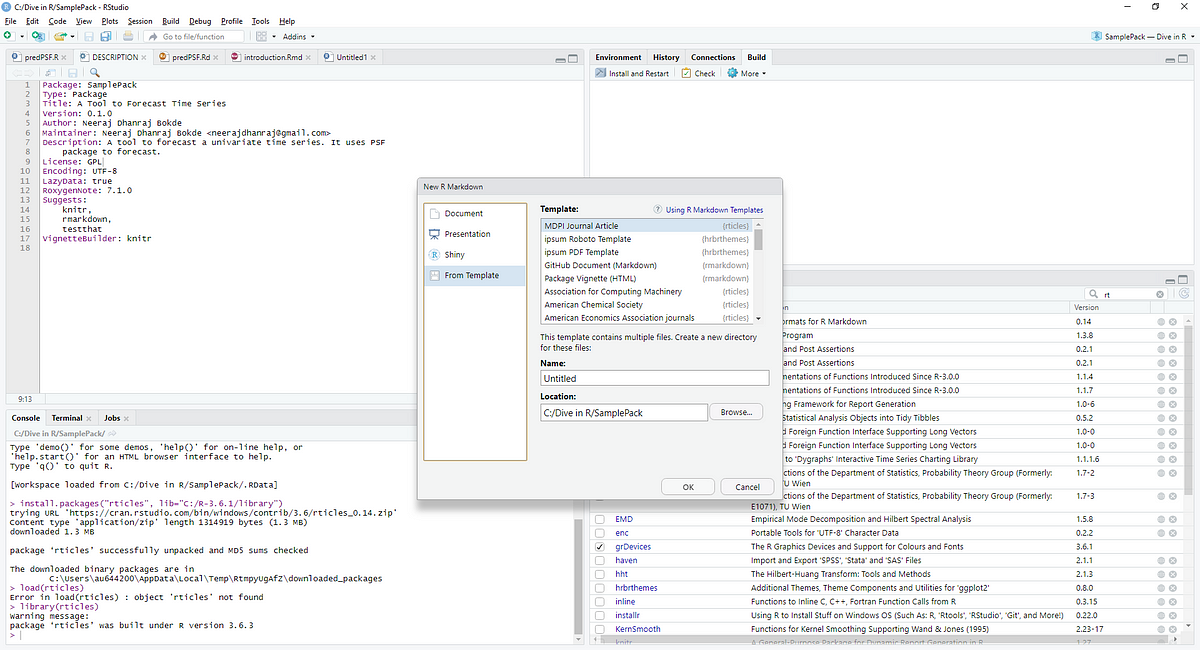Background
In earlier posts, we have already discussed how using an R language is beneficial to the researchers in several ways (here). It provides many benefits such as reproducible research, greater visualization, and a huge audience for your research. Also, we have discussed how and where the research contributed in the R can be published in reputed journals, here.
Now, consider, you are ready with some research contribution in the R and now in a position to draft a manuscript for the methodology or the R package.
If it is a methodology implemented in R and you wish to discuss its performance in your manuscript. In such a case, you may start with an introduction, literature review, proposed methodology sections followed by the results, performance evaluation, and plots you achieved in the R. Finally, you may conclude the manuscript with some remarks. If it is so, you will start by writing all the texts in the respective sections, citations, tables, equations, and figures. These figures and tables can be the output of the analysis done in R. If you are willing to draft the manuscript in LaTeX in the traditional way, you will chalk out all analysis and make a table in the Latex, and you may upload the same figure produced in the R study.
Consider it is a manuscript introducing an R package, the manuscript will be full of R code chunks, R function descriptions, and respective case studies with output plots. It can be really challenging for authors to draft such kind of manuscript with code chunks and other R material in traditional latex format of the journals. You might have observed in several articles, some of them have written the codes very much similar to the original format and fonts, but many of them failed to do so. To avoid the code chunks in the manuscript, some authors preferred to provide the code as a supplement material.
This situation can be explained in other words as a researcher is ready with codes, desired results, and plots, but he/she can not use this content directly to his/her manuscript. Rather, he/she needs to save the results outside the R-Studio and then to embed it in the latex of the manuscript.
To avoid such a situation, this post is demonstrating how R and R-Studio can be used to write a manuscript for several journals with minimum efforts and how the R codes chunks and corresponding output can be directly embedded in the manuscript.
#publishing #data-science #journal #r #research #data analysis
